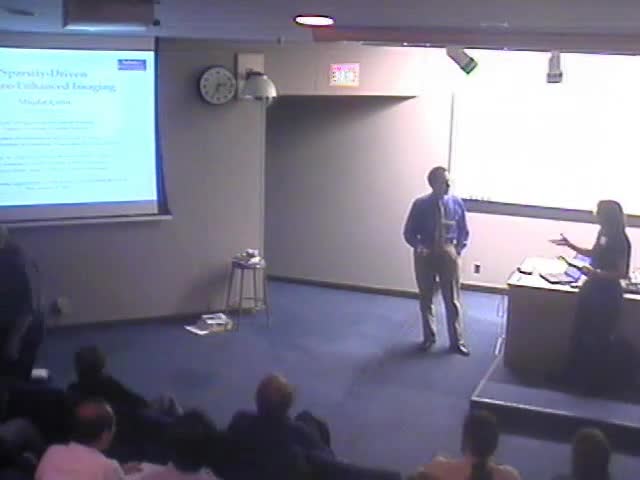Sparsity-driven Feature-enhanced Imaging
Presenter
October 17, 2005
Keywords:
- Image analysis
MSC:
- 62H35
Abstract
We present some of our recent work on coherent image reconstruction.
The primary application that has driven this work has been synthetic
aperture radar, although we have extended our approach to other
modalities such as ultrasound imaging as well. One of the motivations
for our work has been the increased interest in using reconstructed
images in automated decision-making tasks. The success of such tasks
(e.g. target recognition in the case of radar) depends on how well the
computed images exhibit certain features of the underlying
scene. Traditional coherent image formation techniques have no
explicit means to enhance features (e.g. scatterer locations, object
boundaries) that may be useful for automatic interpretation. Another
motivation has been the emergence of a number of applications where
the scene is observed through a sparse aperture. Examples include
wide-angle imaging with unmanned air vehicles (UAVs), foliage
penetration radar, bistatic imaging, and passive radar imaging. When
traditional image formation techniques are applied to these sparse
aperture imaging problems, they often yield high sidelobes and other
artifacts that make the image difficult to interpret. We have
developed a mathematical foundation and associated algorithms for
model-based, feature-enhanced imaging to address these challenges. Our
framework is based on a regularized reconstruction of the scattering
field, which combines an explicit mathematical model of the data
collection process with non-quadratic functionals representing prior
information about the nature of the features of interest. In
particular, the prior information we exploit is that the underlying
signals exhibit some form of sparsity. We solve the challenging
optimization problems posed in our framework by computationally
efficient numerical algorithms that we have developed. The resulting
images offer improvements over conventional images in terms of visual
and automatic interpretation of the underlying scenes. We also discuss
a number of open research avenues inspired by this work.
